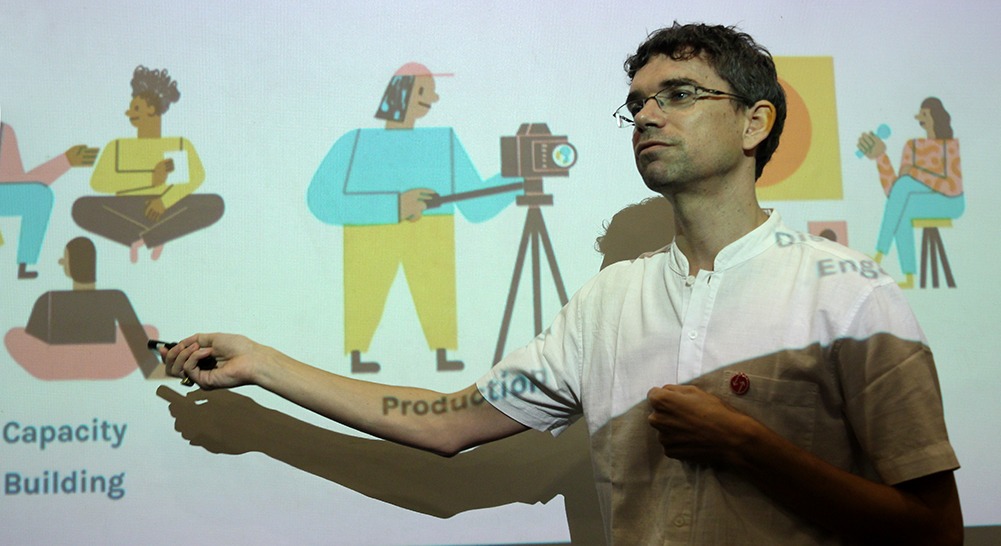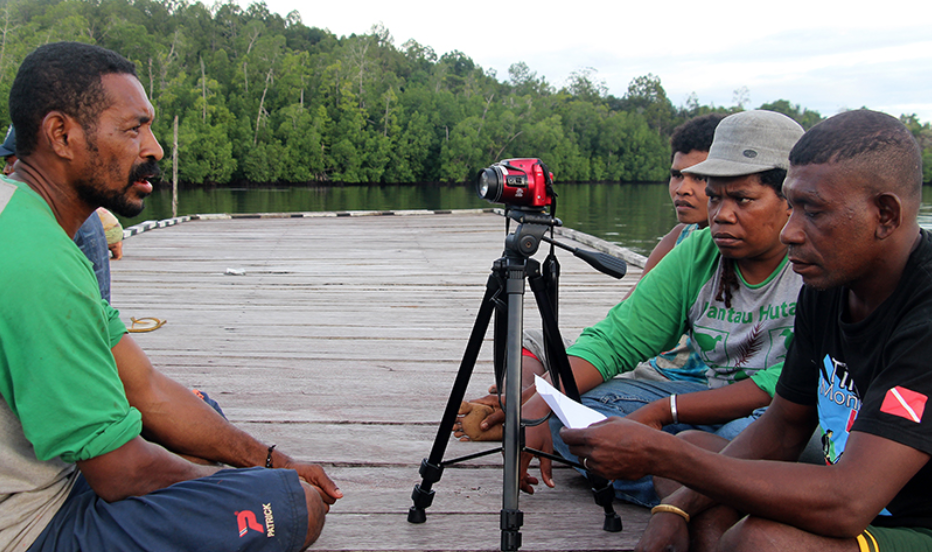
Demonstration against extradition bill, Hongkong, 16 June 2019. Photo by Wongan4614 Wikimedia commons CC BY-SA 4.0, Edited by Engagemedia
Today, thousands of people use video to address social or environmental issues. From Indonesian group Paradoc addressing the disastrous effects of industrial pollution in a village community, to recent videos depicting violent police conduct at protests in Hong Kong. The activists hope that their videos will make an impact and contribute to positive social change.
But does impact actually happen? And do the activists that make these videos have a clear strategy about how their video will contribute to change? Clearly, making a video is not the same as making a change. How can activists maximize the impacts of their efforts?
To answer this question, the Video for Change Impact Toolkit was launched almost three months ago. The Impact Toolkit is not a guide to making videos. Instead, it supports and emphasises all the work around a video—working with communities, designing and planning, building a strategy, having realistic notions of what is possible and knowing whether you’re hitting your goals at every part of the process. In short, it is an online resource that helps Video for Change practitioners strategize, design for, and evaluate the social impacts of their video initiatives.
Shortly after the online release, we did a launch tour, supported by extensive online outreach and the release of an additional Impact video interview. All this engagement and the ability to leave comments directly has resulted in an interesting stream of comments, requests, critique, and praise.
What have we learned so far?
Video for Change practitioners usually have questions about funding. Twice, we were asked for funding strategies and ideas, a challenge many activists and grass-roots film-makers struggle with. Based on these queries and internal discussions, we can announce that future Impact Toolkit updates will include a list of strategies filmmakers can use to raise funds. At the moment, writing a good Impact Statement (and using it as an entry point in talking to possible funders) would be our best advice. Make it absolutely clear to all involved what can be expected of your video and how your video initiative plans to contribute to social change.
Organizations and film festival organizers are interested in joining the Video4Change Network. Much to our delight, this includes some who were not even on our radar. Currently, the Video4Change Network has 12 members, but we are looking to expand the network in the future. So if you are reading this and are interested in joining as well, do drop us a line.
We are not the only ones who think strategizing for social impact is important. We received several requests to promote or partake in events around social impact and the harnessing of video to advance positive social change. Two examples are Picture People’s Summer School on cinema, human rights, and advocacy, which is happening in Venice this summer, and the UNLEASH LAB 2019, where young talents will gather later this year in Shenzhen, China to create advocacy campaigns around the Sustainable Development Goals.
Implementing the Impact Toolkit methodologies requires some training. We try to keep our language simple and things short, yet we realize that some of the theories and concepts require training before they can be implemented by grassroots activists. To address this, we will be updating our Impact Toolkit with training opportunities, as well as the design of easy to implement, bite-sized pieces of valuable Impact Toolkit content.
The Impact Toolkit is an ambitious work, encompassing and capturing a plethora of ideas, methodologies, and concepts related to the Video for Change and Impact field. First-time visitors landing on the homepage might feel a bit overwhelmed: “Where should I start?” Thankfully, the Impact Toolkit is designed to be modular: you can start reading anywhere, navigating to the parts that most interest you or that you need to learn from right away.
What will happen next?
We’ve already mentioned the planned additional sections on funding and the easy to implement, bite-sized pieces of valuable Impact Toolkit content already. Additionally, we hope to translate and contextualize the Impact Toolkit for the Indonesian audience.
Our outreach will continue. We’ll be reaching out to educational institutions where film (documentary), media, and international development is studied, as well as blogs and news portals often visited by activists and filmmakers.
We understand that some users will likely start using the Impact Toolkit when they are faced with a specific challenge or during those moments in their process when they look for inspiration and references. You can be sure the Impact Toolkit is always available and worth coming back to as we’ll keep updating and adding material.
Last but not least, we are raising funds to start implementing the Impact Toolkit methodology in Southeast Asia. We plan to organize workshops, discussing the methodology and its application in existing initiatives, with additional implementing grants for the most promising ideas that can’t be put on hold. Practitioners stay in touch through a linking and learning initiative, while we document experiences and offer mentorship.
We anticipate quite a long journey ahead of us. But the journey has already begun, and we’re glad to have you with us.

